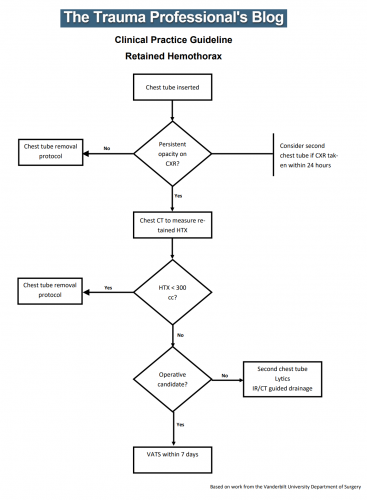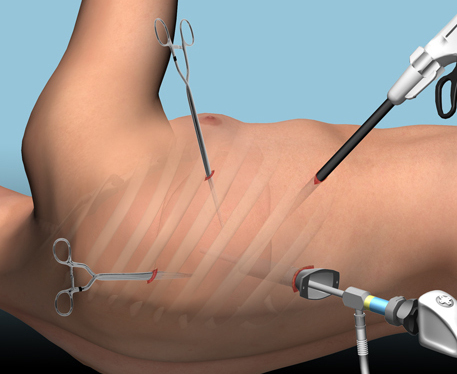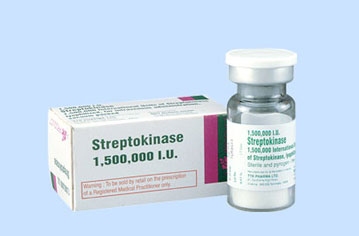Rib fracture fixation has really taken off over the past five years for management of select rib fracture patterns. There are probably two mechanisms by which it improves pain control and speeds recovery.
The first is purely mechanical. In patients with flail chest, there is impairment of chest wall mechanics that decreases ventilatory efficiency and often leads to prolonged intubation and pulmonary complications. The other is the control of pain associated with multiple or displaced rib fractures.
The trauma group at the Brown University Alpert Medical School performed a TQIP database analysis that attempted to tease out the pain component in this equation. They compared outcomes from patients who underwent rib fixation or epidural analgesia within 72 hours of admission. They looked at a single year of TQIP data for adults with rib fractures, and excluded those who had TBI or died within 24 hours. Specific outcomes were pulmonary complications, lengths of stay, and mortality.
Here are the factoids:
- There were just over 1,000 patients in each of the rib fixation and epidural analgesia groups
- A much larger percentage of patients undergoing fixation had a diagnosis of flail chest (43% vs 13%) and a higher ISS (17 vs 14)
- Early rib fixation was associated with an added 1.5 day length of stay, but this was not statistically significant
- Early fixation was significantly associated with a higher risk of unplanned intubation
- There were no differences in respiratory failure, VAP or mortality between the groups
The authors concluded that rib fracture fixation was associated with longer hospital length of stay but less risk of unplanned intubation. They suggest that patients should receive early referral to centers where both interventions are available so appropriate candidates can undergo fixation.
Bottom line: I’m struggling a bit here. When I read the title I thought I might learn something more about my therapeutic choices for patients with more complicated rib fractures. But this was not even a “how we did it” paper, but a “how hundreds of other centers did it” study. For a subject like this, a database study like this injects quite a bit of selection bias that just can’t be removed.
For example, look at the huge (3x) difference in flail chest between the groups. Clearly, patients with a flail have a higher ISS and hospital length of stay, and are much more likely to selected for fixation. Thus, that diagnosis alone will skew the data more than the choice of procedure. I would suggest that simple descriptive and regression analyses is not adequate to answer your questions. Some type of propensity matching for ISS or at least AIS chest is probably required.
The only statistically significant result in the abstract was the decreased risk in unplanned intubation. Again, it’s difficult to say whether this is related to the larger percentage of patients who had flails who had their risk decreased by the procedure.
Here are my questions for the authors and presenter:
- Did you exclude all patients with TBI? Why not keep those with mild TBI (GCS 14-15), since they should behave similar to those without head injury?
- Why did you restrict your dataset to patients who underwent either procedure within the first 72 hours? This seems like an arbitrary time frame. Do you have a sense of the distribution of time interval until either procedure? As a thought experiment, let’s say that the mean (or median) time to either of the procedures was 5 days. You would be sampling the small, early tail of patients who had an intervention before day 3. In that case, your study might not be representative of of real life.
- Did you analyze the chest diagnoses and/or AIS chest? Controlling or propensity score matching for this may have yielded additional information.
- You concluded that patients should be referred to centers where the best care can be provided. Isn’t this what we do already?
This is an interesting paper, and I’m hoping that you have more data to present than would fit in the abstract!
Reference: COMPARISON OF SURGICAL STABILIZATION OF RIB FRACTURES VS EPIDURAL ANALGESIA ON EARLY CLINICAL OUTCOMES. EAST 35th ASA, oral abstract #29.




